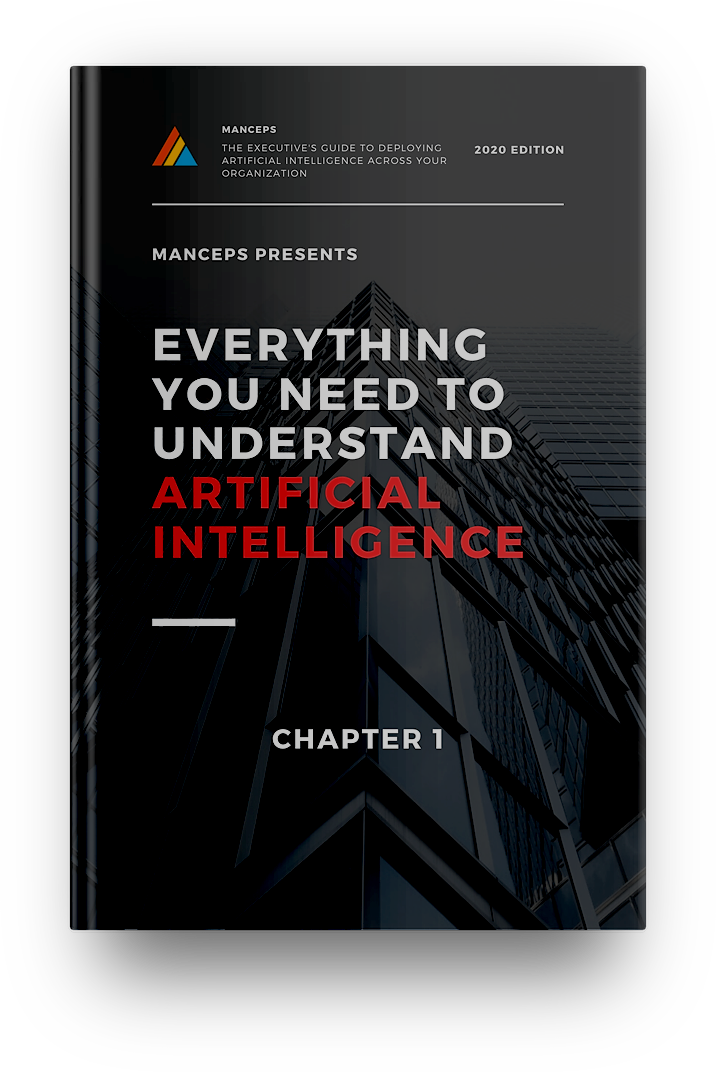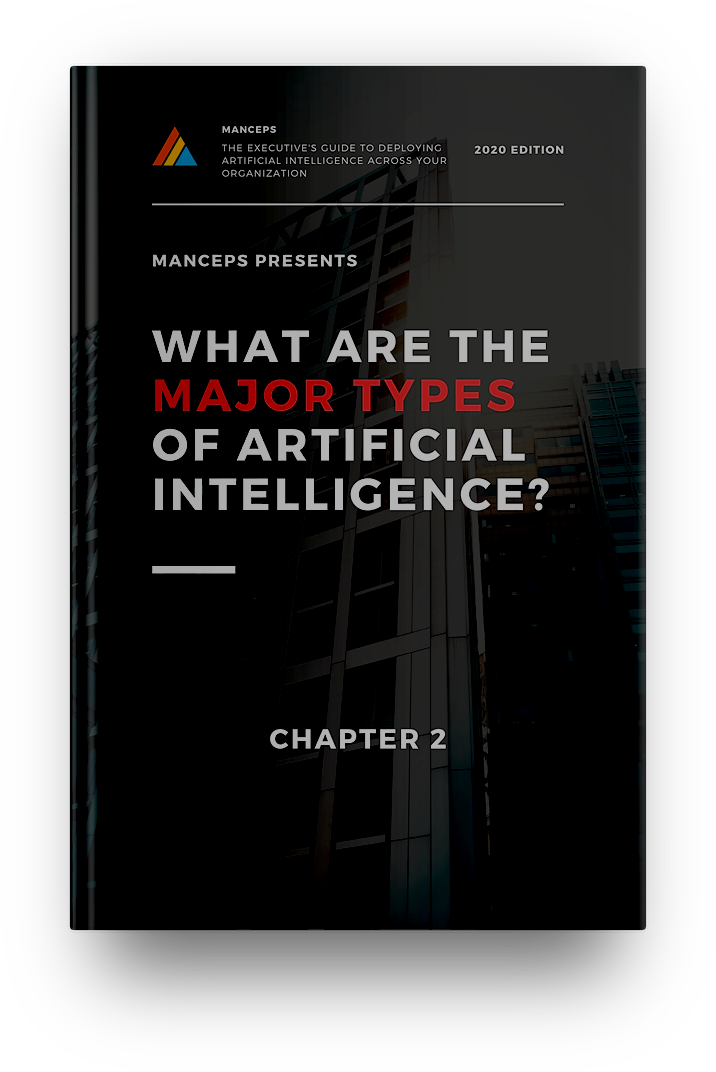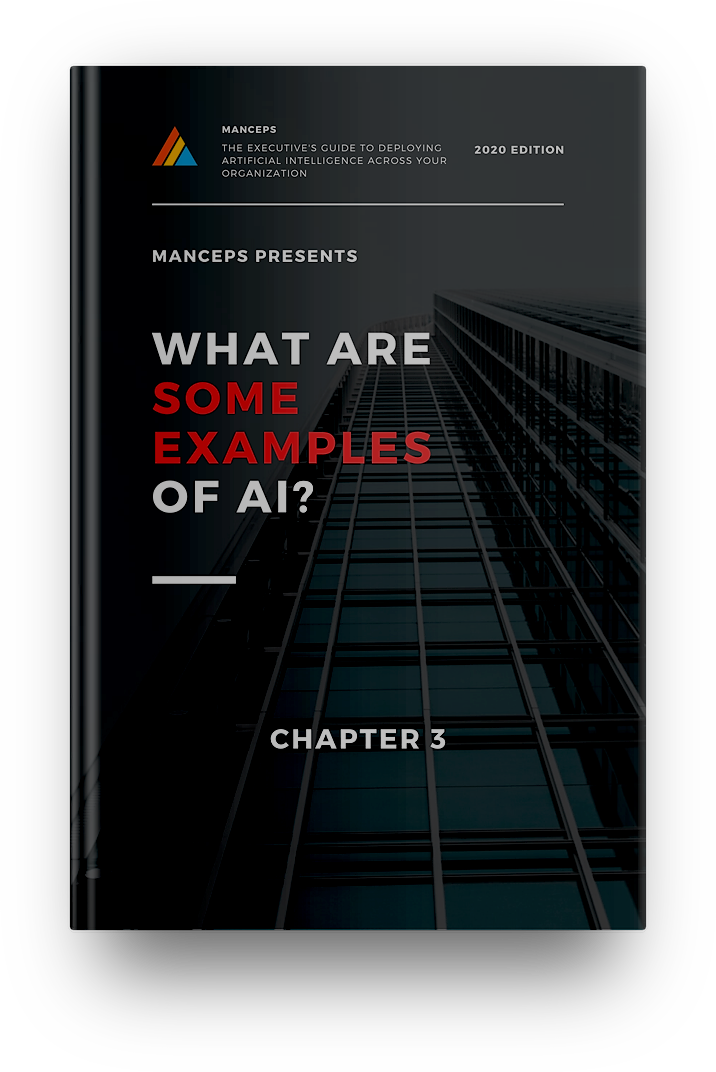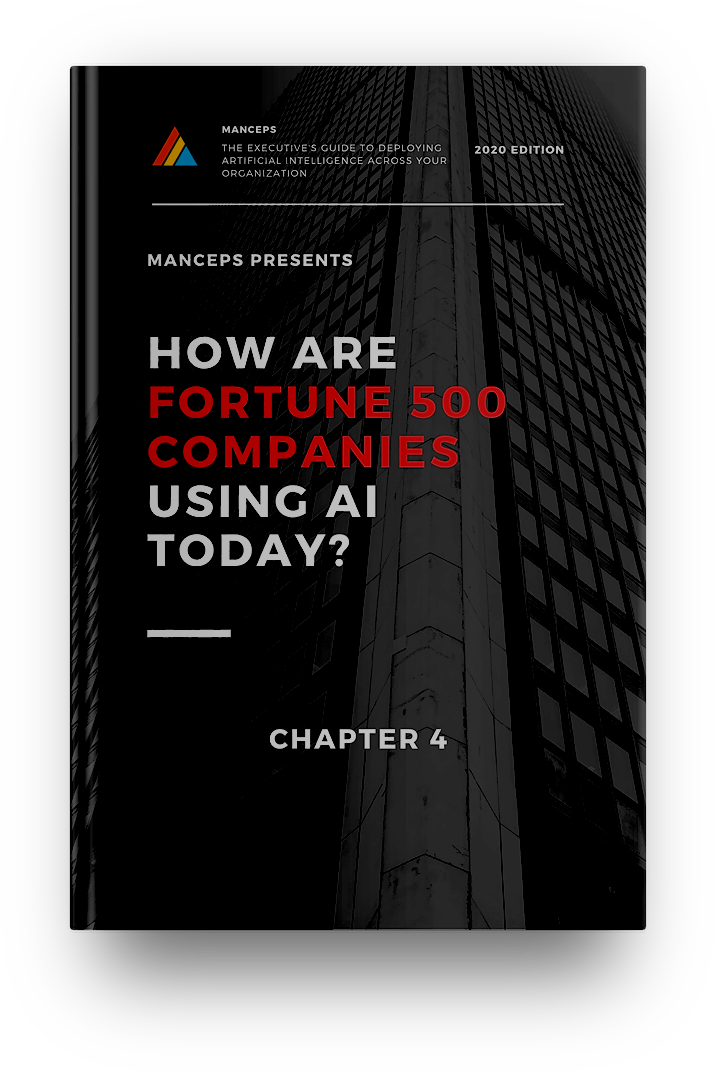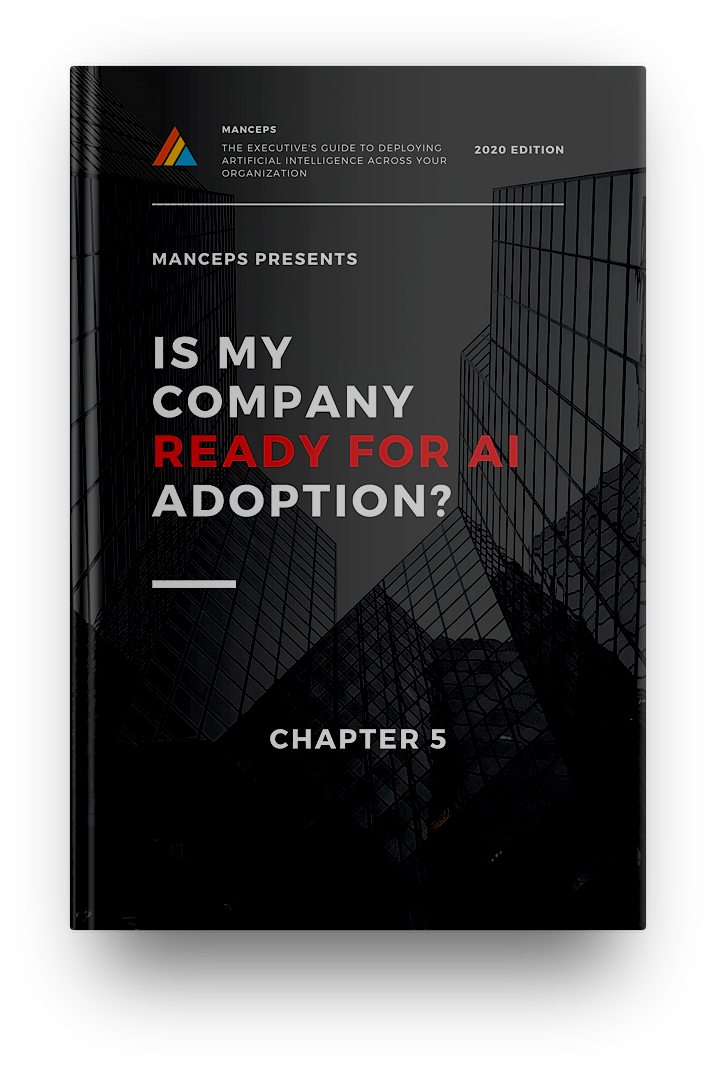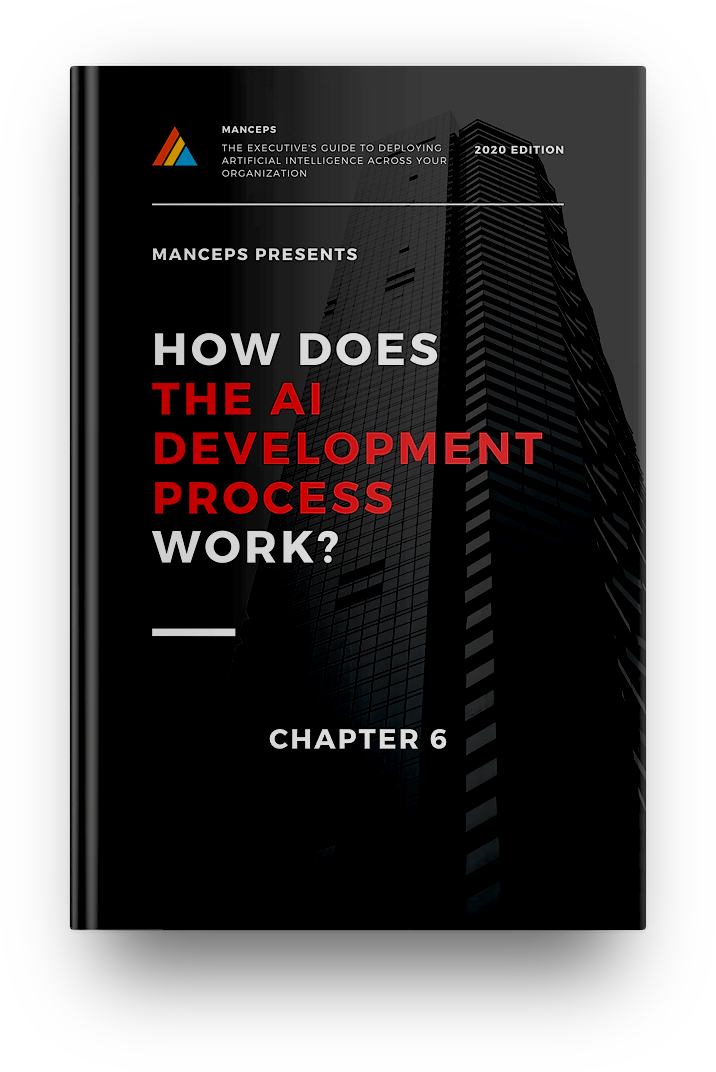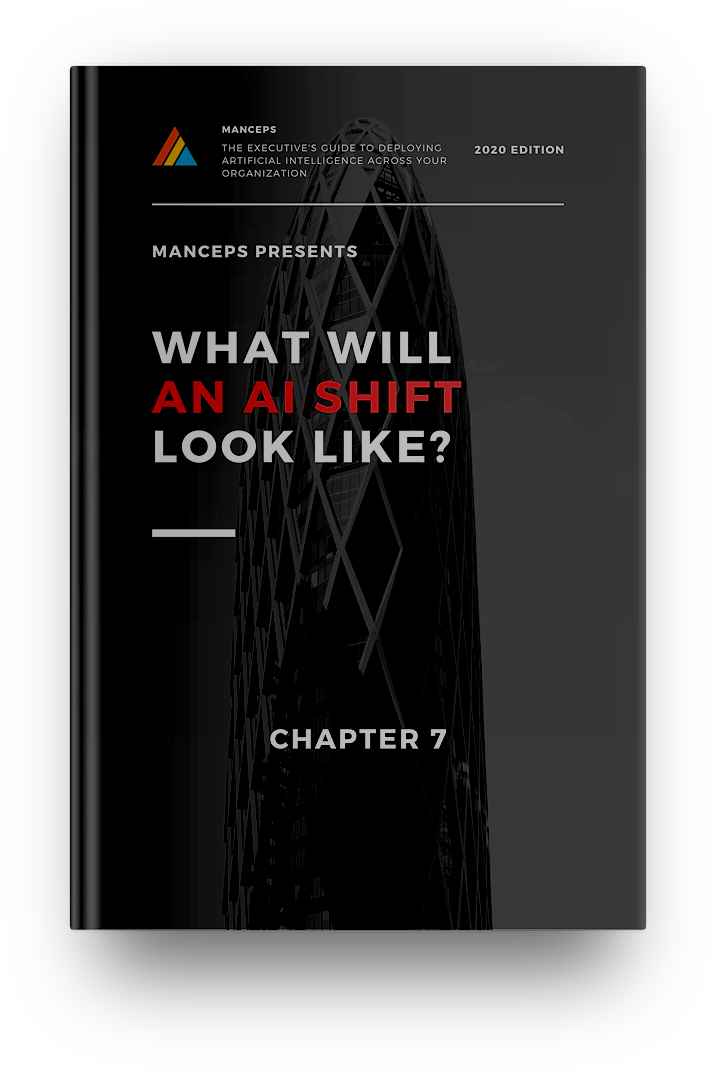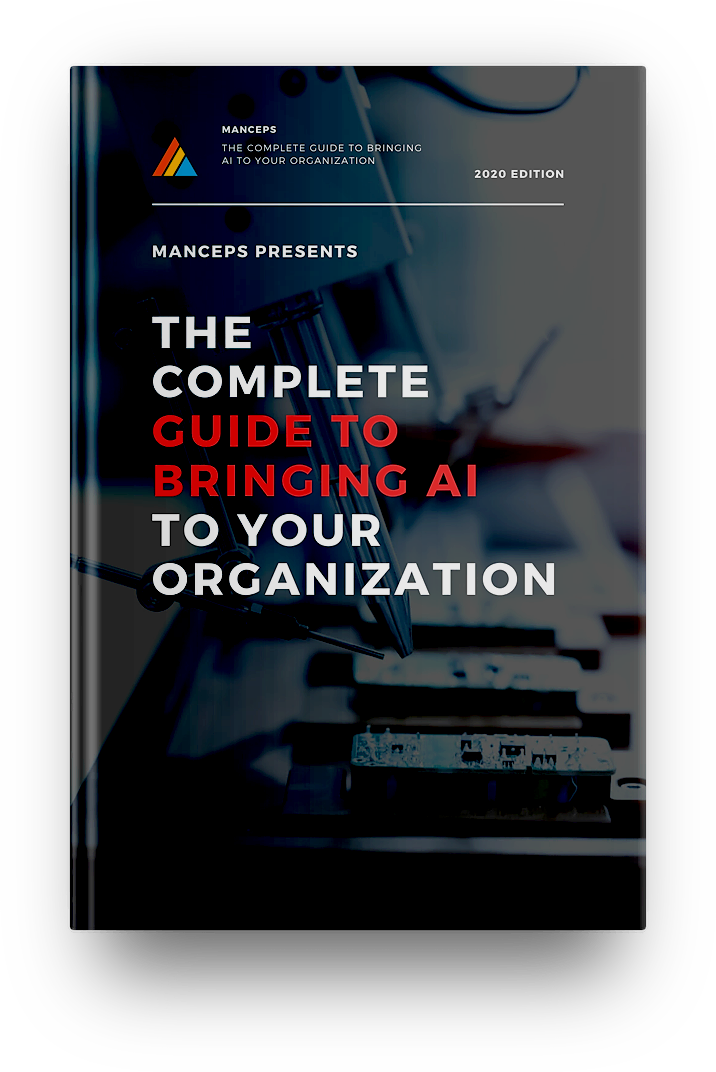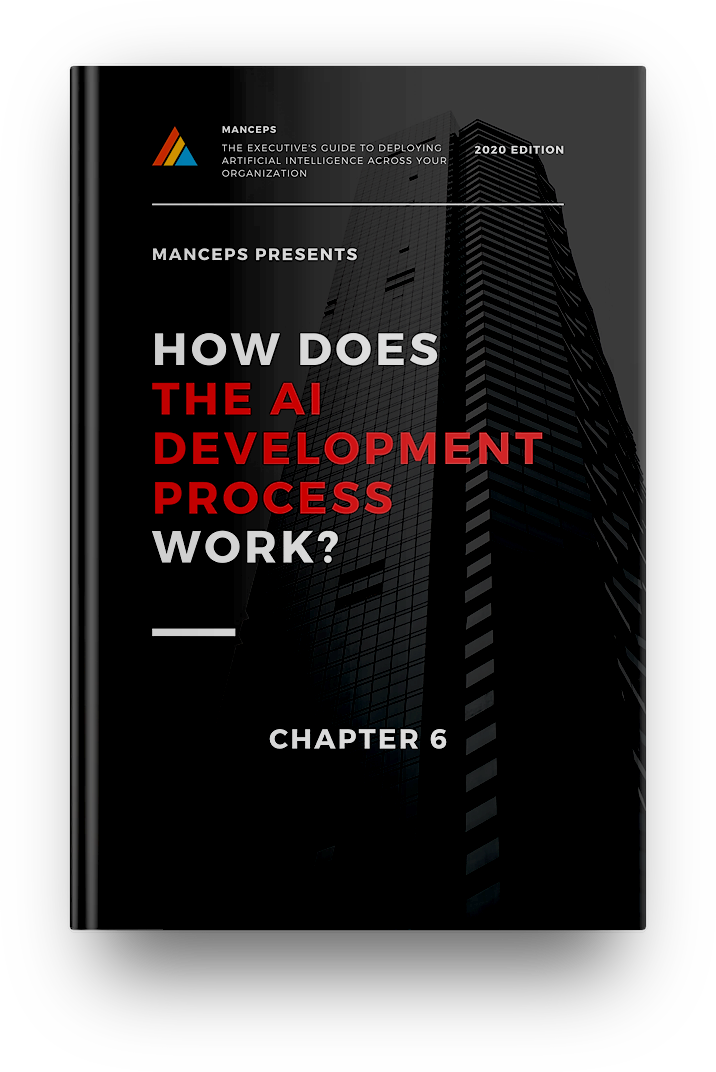
Free Resource
How Does the AI Development Process Work?

How It's Done — Step by Step
When embarking on an AI initiative, many companies are keen to understand how the development process works. In many ways, working with us is similar to working with any software development organization. First, we’ll help you define the project and its goals, research correct solutions, build and test your model, and ultimately put it into production.
Step 1: Define Project Goals
As we’ve discussed in previous chapters, artificial intelligence is great for automating repetitive tasks, scaling the work of humans, and transforming datasets into predictive and actionable insights. If you’ve gotten this far in our guide, it’s possible that you already have an idea for an AI solution you’d like to build.
For those that don’t, we recommend you start small. When thinking about your first AI deployment, try to find a solution that uses data you already collect and is directly related to your bottom line.
In fact, during the discovery process, our investigations typically orbit around two main questions:
- What are your long-term strategic goals?
- What data do you have?
Thinking holistically about how your company operates and where it’s headed can give you some excellent insight into what kinds of cognitive intelligence solutions would be good for your organization.
Furthermore, by paying attention to the kinds of data you collect, you should be able to identify a few opportunities for quick AI adoption.
For example, a manufacturer might build an AI solution that detects manufacturing defects using the video cameras already installed on the factory floor. This would be a great AI pilot project because it uses the data they already have (video camera footage) and is directly related to their bottom line.
Having existing data streamlines the AI adoption process. However, if you don’t have the data you need, we can help you develop and execute a data creation plan.
And if you’re completely unsure where to place your AI bets, we suggest you check out our free resource, Discussion Questions for AI Readiness. There, you’ll be able to swim around in dozens of thought-provoking questions that will help you imagine the ways that AI could make a huge difference at your organization. The questions are organized around solving specific problems related to:
- Planning and decision making
- Operational optimization
- Customer service
We focused on those three as lots of research has indicated that those are the key value drivers for AI adoption.
Ultimately, making decisions around AI can be tough because the technology is changing so quickly. Here at Manceps, we love helping companies through this process. Our AI Applied service combines enterprise strategy with AI technology engineering to help your organization develop and execute an AI transformation strategy to maximize your ROI.
Step 2: Conduct Data Audit
Once you have defined the scope of your project, our AI engineers will go to work determining your AI project readiness by looking at your datasets and ensuring that they are properly structured and well-aligned with your AI goals.
See, artificial intelligence depends on having the right kind of data in the right format. For example, if you’re looking to make hourly weather predictions, then your dataset must include hour-by-hour weather information.
Step 3. Research AI Solutions, Algorithms, and Existing Models
Once we determine the shape and quality of data, we then embark on a discovery process to stitch together an AI solution. Fortunately, the space is populated with a vast set of pre-trained models and open-source technologies that make building an AI model easier than ever.
However, AI research is clipping along at a breathless pace. Models that were industry-standard a month ago can be outdated a few weeks later. The best AI teams will integrate these cutting-edge capabilities into the solution they outline.
Step 4: Package the Project for Stakeholders
This is the stage at which an entire AI deployment plan comes together. Here is where all of the project requirements are gathered, the models selected, the Machine Learn infrastructure agreed to, and everything is mapped out. It’s also the stage where you’ll want to make the business case for stakeholders and others involved in the process.
Once everyone agrees that this is the right direction, the next step is to begin building out the model.
Step 5: Design the Model
Here is the part of the process where we train and optimize the model. Because AI models depend on data, you can expect a big part of this process to include data structuring and labeling.
Once properly organized, the data can then be fed into the model for training purposes. We should mention at this point that training a model can be a resource-intensive and expensive process. We use a variety of on-prem and cloud solutions to ensure that your model gets trained as quickly and affordably as possible.
At this point, the model will be functioning at a baseline level of accuracy — usually around 70%. From there, depending on your particular use case, our team will work to refine the model further and further until it functions as intended. This testing process can take as little as a few days to several months, depending on the complexity of the model you’re trying to build.
Step 6: Operationalize the Solution
Once the model has been trained and optimized, it’s time to integrate it with your business operations. In most cases, this involves creating the proper APIs so that your model can communicate with other systems. These systems can then perform tasks automatically or relay information to human-users.
Explore Our Other Guides
We've written up lots of articles to help business professionals orient themselves around AI. Learn how Artificial intelligence can meaningfully change how your organization does business by exploring the resources below.


